"Stile Liberty" in Milano
Ceramic frescoes from casa Galimberti
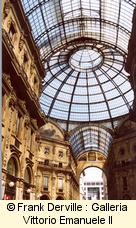 Milano is one of the largest city of Italy
and its most important economical center. In the years 1900, Milanese
industry leaders had their week end near lake Como or lake Maggiore
which explains also the use of Art Nouveau in towns like Verbania,
Stresa or Bellagio or the Campo dei Fiori near Varese. There are
several hundreds of Art Nouveau buildings in Milano.
Milano is one of the largest city of Italy
and its most important economical center. In the years 1900, Milanese
industry leaders had their week end near lake Como or lake Maggiore
which explains also the use of Art Nouveau in towns like Verbania,
Stresa or Bellagio or the Campo dei Fiori near Varese. There are
several hundreds of Art Nouveau buildings in Milano.
The
galleria Vittorio Emanuele II (built in 1865-77 (so it cannot be called
Art Nouveau)) is one of the most overwehlming example of the influence
of the economical wealth and its industry power. It puts a fine Italian
building together with an iron and glass ceiling, creating a really
charming place.
Sommaruga Giuseppe (1867-1917)
Sommaruga is the most well known Art Nouveau architect of
Milano. His first important work is the Palazzo Castiglioni in the
corso Venezia, 47 built between 1901 and 1904 as a total work of art
(see for instance the metal work). The two statues of the Palazina
Facanoni (called Industry and Peace) framed originally the main door
of the Castiglioni building. They were removed only 15 days
after the inauguration because they made a big scandal.
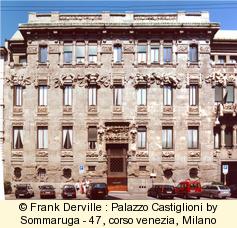
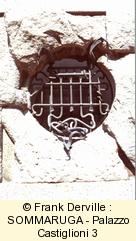
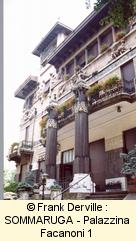
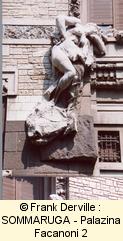
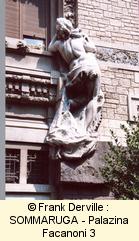
via
Piscane
Via Piscane is one of the
two main streets of Art Nouveau buildings together with via Malpighi
(see below). From number 16 to number 22, the whole building block is
still built in an Art Nouveau style. Casa Cambiaghi is one of the
block; you can admire the decoration use of the peacock : his back for
the balconies and his front over the windows. The opposite side of the
street had been unfortunatelly destroyed.
The 41,
via piscane (Casa Battaini) was influenced by Belgian Art Nouveau and Horta.
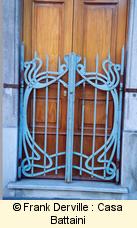
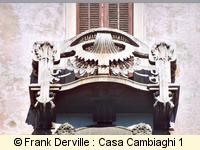
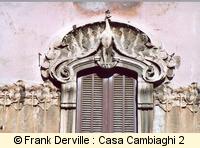
via
XXY
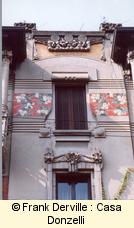
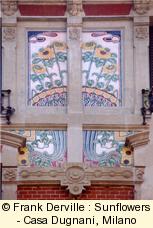
via Malpighi
Could this house be called
the "Mucha" house?
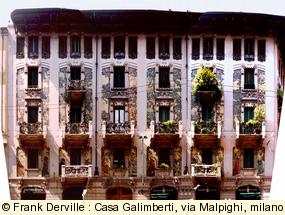
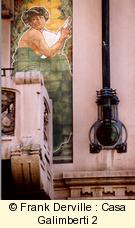
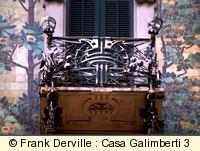
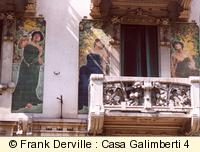
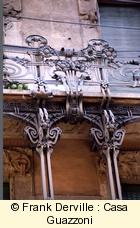
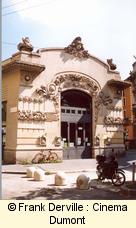 The Cinema Dumont
(via Frisi, 8-9 angle with via Malpighi and Melzo) built in 1909.
The Cinema Dumont
(via Frisi, 8-9 angle with via Malpighi and Melzo) built in 1909.
Arata
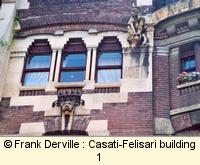
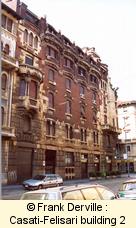
Arts & Crafts in Milano
Doors
Here are several eamples of door work in Milano : abstract
floral wood work and stain glasses for Casa Hahn, more geometrical work
for the Emporium (corso Venezia) and a really fine iron and glass work
for the building via Ausonio, 2 : note the use of semi transparent
glass instead of stain glasses.
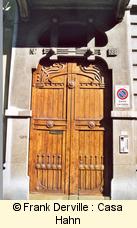
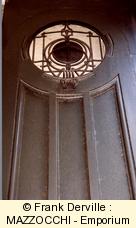
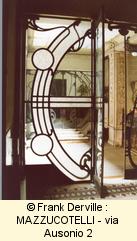
Iron work
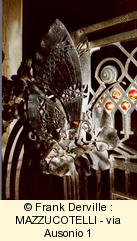
Stain glasses
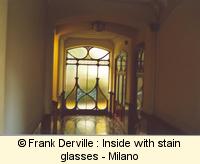
Stone graves
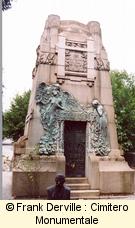

 RSS
RSS























